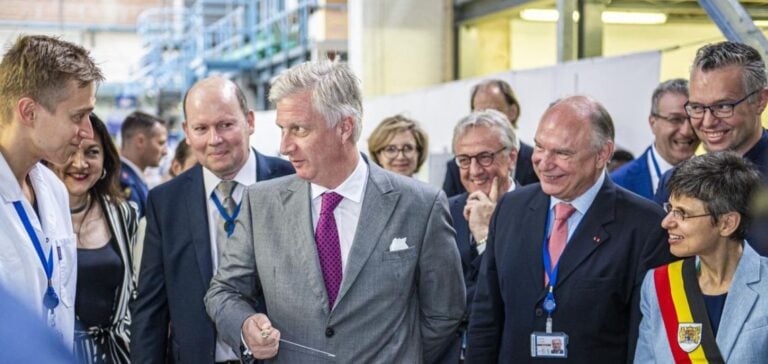Construction of the first phase of the Myrrha research reactor has begun in Belgium. This project, part-funded by the European Union, aims to replace the aging BR2 reactor and demonstrate the transmutation of long-lived radionuclides.
Introduction to the Myrrha Project
The Myrrha reactor (Multipurpose Hybrid Research Reactor for High-tech Applications) is designed as a sub-critical system powered by a proton gas pedal. This pioneering project will be developed in three phases, the first being the creation of Minerva, a particle gas pedal and two target facilities. The second phase will increase the gas pedal’s capacity to 600 MeV, and the third phase will see the construction of the nuclear reactor itself.
Financing and Partnerships
The Belgian government, with a contribution of 40% of the total cost of 1.6 billion euros, gave the green light in 2010. Belgium ‘s Council of Ministers has approved funding of 558 million euros to cover Minerva’s investments and operating costs until 2038. The project is also supported by the European Union and the European Investment Bank, with 70% of the funds coming from EU countries. The aim of this project is to renew Belgium’s nuclear fleet. In addition, the first Belgian reactor, which is 40 years old, was shut down in 2022.
Applications and Research
Myrrha will replace the aging BR2 reactor, and will be used for various research functions, including transmutation of long-lived nuclear waste and production of radioisotopes for medicine. Minerva will play a crucial role in the production of new medical radioisotopes emitting alpha particles, enabling less invasive treatments for cancer patients.
A Technological Advance
Hamid Aït Abderrahim, director of the Myrrha program and deputy general manager of SCK-CEN, said the project could enable certain highly radioactive nuclear waste to be reused. By reducing waste to its natural level of radiotoxicity after just 300 years, Myrrha could reduce the problem of nuclear waste from a geological to a human scale, and reduce its volume by a factor of 100.
The Myrrha reactor is part of the European strategy for research infrastructures, alongside the Jules Horowitz reactor in France and the Pallas reactor in the Netherlands. These projects are the cornerstones of the European Research Area for experimental reactors.






















